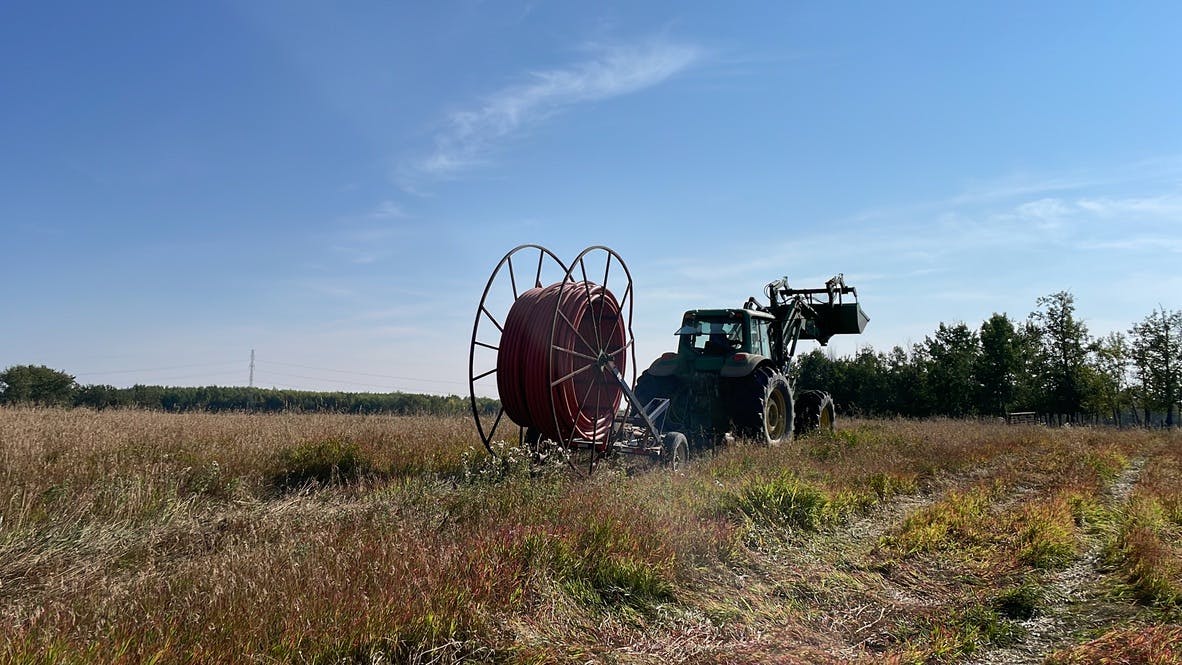CLEAN, COOL WATER — STRAIGHT TO YOUR CATTLE
Watering cattle through more traditional methods such as natural water sources or dugouts poses threats to your cattle and your water source. For instance, in drought years, your dugout or pond is at risk of drying up to the point where mud is exposed, posing a risk to your cattle of getting stuck in the mud or a reduction in water quality.
Pasture pipelines not only eliminate those risks, but they also enable you to bring water directly to your cattle, rather than bringing your cattle to water — meaning more flexibility and better utilization of the forage.
OUT OF SIGHT AND OUT OF HARM’S WAY
Now, you might be asking—why bury them? Can’t you just lay some pipelines on top of the ground and pump water through them to your watering points? And the answer to that is yes, you absolutely could— but you may be battling some bigger issues in the future. Laying pipelines above ground comes with risks to both the pipes and the cattle. Above-ground pipes are more susceptible to being run over with equipment, cracking or breaking due to elemental wear and tear, and even being destroyed by overly curious cows or other animals.
Outside of damage to the pipes themselves, the water being transported to the cattle is in direct sunlight, which means it can be very hot once it arrives at your watering stations.
On the other hand, burying pipelines just below the surface eliminates all these risks, and comes with the added benefit that the water delivered to cattle is fresh and cool, and water quality cannot be compromised by cows accidentally getting into it. The installation process is non-intrusive, and only requires a specialized plow and a small tractor. Once the pipe is loaded on the plow, you can choose to plow as much or as little as required. Driving the tractor back over where the pipeline was installed will flatten the ground and make it look almost like the plow wasn’t even there.
In the fall when water is no longer needed, the pipeline can easily be blown out with air to prevent damage to the pipeline from freezing. Come springtime, if any pockets of water remain, they will easily thaw due to the shallow bury depth, so you are ready for grazing.
APPLY FOR FUNDING FOR YOUR FARM
Interested in installing shallow-buried pasture pipelines on your farm? There’s still time to receive funding for this as well as other beneficial management practices under the On-Farm Climate Action Fund.
